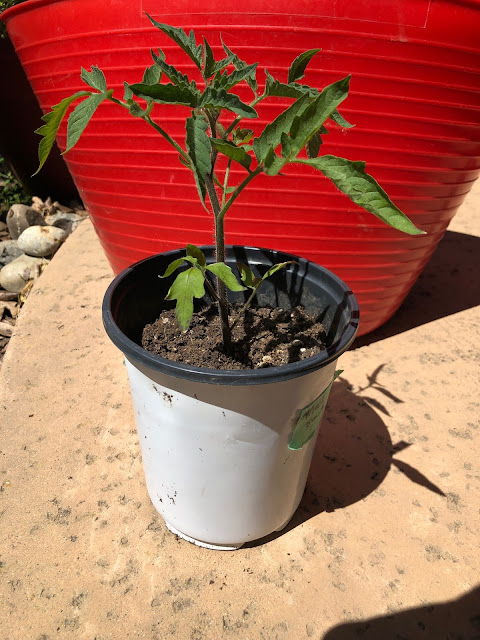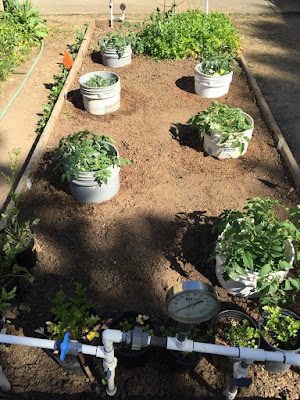
|
|
When this tomato seedling goes in the ground (very soon), those lower leaves will be stripped
off and the tomato planted with only the top leaves and branches exposed. Thanks for the
planting advice, Fred,
and Happy Birthday! (Photo: Kathy Morrison)
|
Plant seedlings deeply; water deeply, too
Happy Tomato Planting Day!
Yes, we have radio host Farmer Fred Hoffman to thank for this unofficial Sacramento holiday. His birthday is April 28 and coincidentally that day meshes nicely with the perfect planting date in our climate for our favorite crop.
With the current high heat, you may want to wait a few days if you don’t already have your transplants in the ground. Temperatures are supposed to cool way down this weekend with highs in the low 70s – still warm enough for tomatoes, but a lot more comfortable for gardeners.
Fred offers tons of valuable tips on growing great tomatoes on his website,
www.farmerfred.com
. Among his most useful for planting day: Plant deeply.
Unlike most other plants, tomatoes are not transplanted with the same soil level as they grew in the pot.
Says Fred, “Place the tomato deep into the soil, clipping off the lower leaves and leaving only the top leaves and branches exposed. This will cause more roots to develop along the stem, speeding development.”
It also allows the tomato plant to develop a bigger root system, capable of pulling up more nutrients from the soil and more water.

|
|
Pete Frichette, Sacramento's home-grown Tomato King,
already has a few Early Girls and Better Boys
growing in his garden. (Photo courtesy Pete Frichette)
|
Speaking of water, Pete Frichette – Sacramento’s Tomato King – trains his transplants to go deep. He does this by thoroughly soaking the planting area in advance.
Here’s his explanation:
First, he dug out a “pan” about 3 inches deep running the length of the planting bed. In addition, he dug big holes, each another 18 inches deep.
“This area has been filled about five times and the water then allowed to soak into the surrounding soil,” Pete explained. “Next, I will fill just the holes with my planting mix, one-third existing soil, one-third commercial potting mix and one-third my own compost mix. This I will then soak, then plant my tomato, which I will also water well in. Then, I will bring the top soil back into the pan and wet it in, also. That will be the last water the transplants will see for eight to 12 days, depending on the weather.”
If it gets too hot, he’ll give the new transplants a drink. “The leaves will generate the required signal,” he said, referring to drooping foliage. “Meanwhile, the concept is that the roots will follow the moisture downwards, thereby forming a deeper root ball and a healthier overall plant.”
Another trick that Pete uses for bigger, more bountiful plants: He places a 5-gallon bottomless bucket around each seedling. When he feeds his plants, he uses diluted liquid fertilizer, poured inside the bucket. It’s also handy for deep watering.

